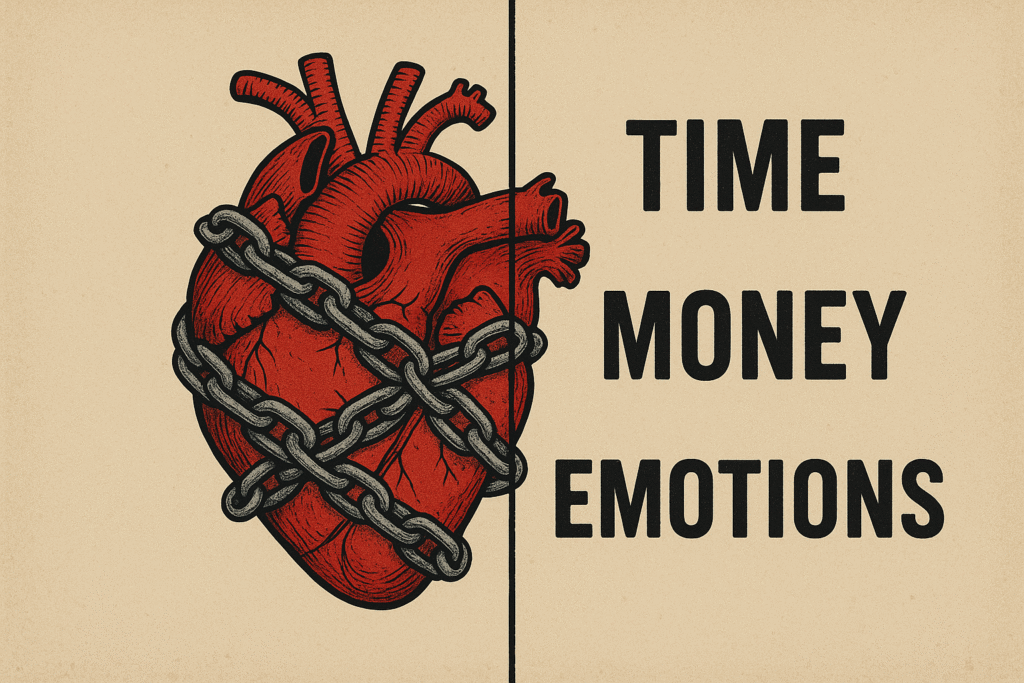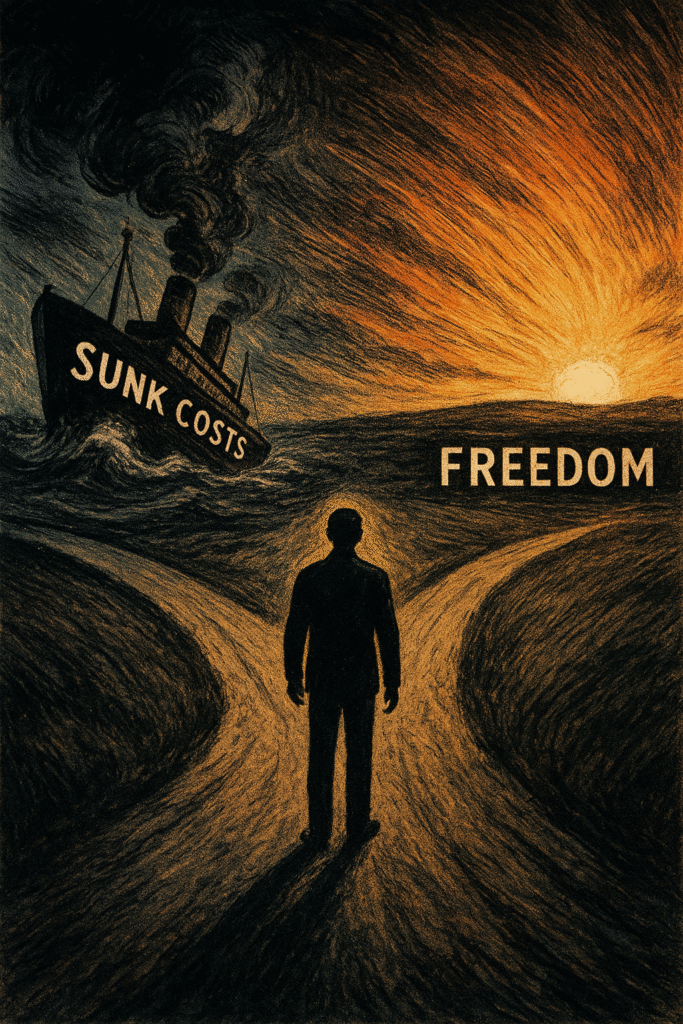The sunk cost fallacy will limit your freedom and prevent you from living a meaningful life. I will teach you lessons from my life to defend yourself and how to use it to your advantage.
Whether you’ve poured thousands of hours learning a skill or feel obligated to get healthy because you’ve paid a coach thousands of dollars, the sunk cost fallacy cannot be avoided because it’s a direct function of time accumulation. Its influence is used in sales, interpersonal relationships, and more.
A Life Skill Worth Mastering
“I have no sunk costs… Sunk costs—anchoring decisions to past efforts that can’t be refunded—are a devil in a world where people change over time.”
-Morgan Housel
Under the broad umbrella of psychology—a lifelong skill far more valuable than any degree—lies the sunk cost fallacy, it can be a insidious subcategory if you let it. It affects everybody, but not everybody is aware of its existence or how to utilize it.
A psychology degree is damn near useless, but as a life skill, it’s irreplaceable. Awareness is the first step to self-growth, but taking action is what truly gives you control over your life.
My Real Estate Nightmare: A Year Invested in the Wrong Path

I ran into the sunk cost fallacy recently when I spent 1 year becoming a real estate agent. My investor friends talked about real estate and I said, “If I learn real estate for a year I’ll know more about the real estate market then I can take advantage of it.”
Money was paid, courses were taken, hours spent studying, and I passed the exam first try. Time to start working. The onboarding process was seamless and resources were provided then I was given the choice of cold calling, open houses, or door knocking. Fuck. I didn’t like any of the options.
87% of real estate agents are out of the business in 5 years. Every email, phone call, text begs for your money. Everyday without a sale you’re burning money. Mentors tell you not expect your first sale until 100 days after you make contact with a client. The war of attrition. Do the math and you’ll see why 87% of real estate agents don’t surpass 5 years.
The first step of becoming a real estate agent is contact your circle of influence, everyone around you. Yes even grandma, closest friends, and friends you haven’t spoken to in years. I took a picture of myself in a grey suit an ex-gf had bought me for Christmas and made a google business profile, contacted friends and family, did market research, and made Instagram videos when I realized this is not who I wanted to become.
The Emotional Costs

Time and money aren’t the only levers the sunk cost fallacy can pull. It’s emotional putting yourself out there telling people about this new thing. It gets more emotional when you decide it’s not for you.
When I realized I was caught in the trap I cut ties with my brokerage, and ended subscriptions. Going back to square one sent me into a spiral.
Avoiding pain is human, but will leave you unhappy long-term. Staying a real estate agent would had avoided short-term pain…but at what cost? Short-term pain for long-term gain will always hold true.
This applies to careers, jobs, relationships, hobbies, etc. even… self-transformations?
Question:
What is something that you do for the sole reason that you’ve put time, money and effort into? Is it making you happy?
Flipping the Script: How Sunk Costs Can Fuel Your Success
Your downfalls are someone else’s inspiration to get back up.
-Rudy Galan
We succeed when we put our time, money, and attention toward something, but what came first the chicken or the egg? Walking 10,000 steps, lifting weights, and eating whole foods is free so why does spending $4,000 on a coach guarantee success?
There’s no way you were going to spend $4,000 and NOT do the habits. This is the sunk cost fallacy working for you. You just had to buy it with your time & money.
Having a home gym is all fun and games until progress slows. Gains had slowed because there was no pressure, no environment, I was no longer betting on myself. Joining a cheap gym didn’t do the trick either because it was $12 and the people around me were lackluster.
I got a $100 gym membership that was 24/7, provided all the amenities, and was around serious people. As a seasoned coach I didn’t need any of that, my home gym was capable of building the body I wanted as well as the cheap gym, but that’s not the party trick I was using.
I utilized the gym more often because I spent alot of money on it. I started showering there, eating the meal preps they provided. If I’m going to pay, I’m going to use it. Best decision I’ve made. It took some thinking about, but I found a way to make the sunk cost fallacy work for me.
Question:
In what ways has the sunk cost fallacy worked for you? What are some things you do that benefit you because you’ve spent time and money on them?
Self-Assessment: Your Roadmap to Breaking Free
Assess yourself:
- Grab a notebook and a pen.
- Write the top 3 things that you dedicate your time to.
- On a scale from 1-5 how happy does it make you? You can’t use 3. Write the number next to the above.
- Write your top 3 goals that you can’t seem to push towards that you wish you could.
- Next to each one write one way you could dedicate time & money to it.
Put these things in action today, not tomorrow…procrastination is another monster.
Awareness to Action: Mastering the Sunk Cost Tool in Your Psychological Toolbox
Leverage is using something to your advantage that also has the potential to hurt you. The sunk cost fallacy is a tool of life to be used and when it’s used against you be aware of it to take the correct steps for long-term happiness.
Psychology is on-the-job training only your job is to learn about yourself and nobody is going to be more interested in you than you. It’s a lifelong process composed of multiple elements that interconnect with each other and change.
It’s hard to see the forest when you’re in the forest, but it does help knowing you’re in a forest.
Using these tools for good and recognizing when they are hurting you is key to being happy more of the time. To live a life worth living.
Light does not exist without darkness, therefore a good life doesn’t mean the happiness of every second.
Life is uncontrollable & everchanging and we must live with the decisions we’ve made and those we didn’t make. Don’t let the sunk cost fallacy dictate the direction of your life. The sunk cost fallacy is one tool in your toolbox of life, take advantage of it and live a good life.
“The best investment is in your future yourself so cut the losses, and commit to wins.”
-Anonymous

